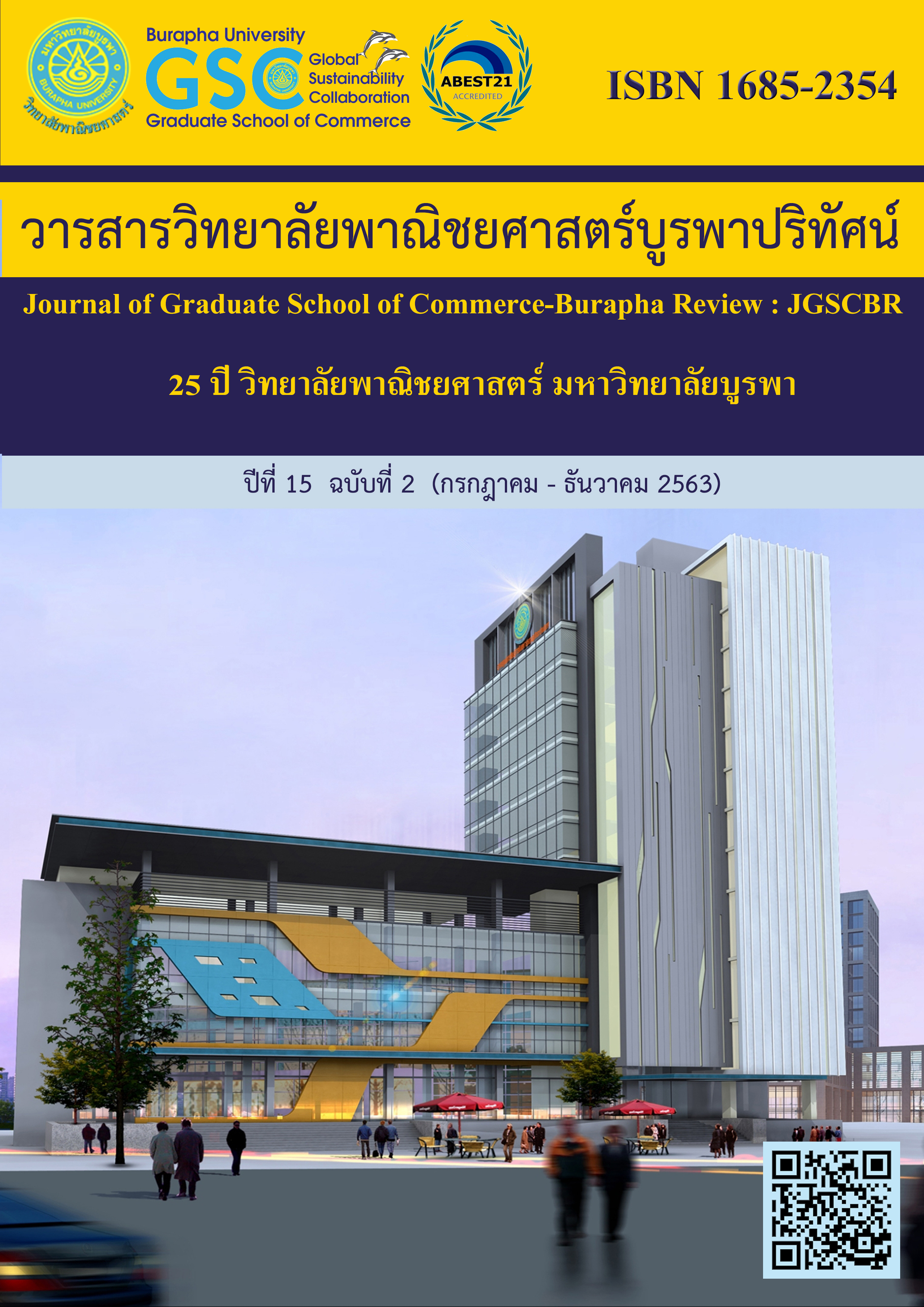FACTORS INFLUENCING CLUB SELECTION OF BASKETBALLERS IN THAILAND
Main Article Content
Abstract
This research aims to investigate influences over the club selection of basketballers in Thailand. In order to undertake a survey of professional basketballers’ opinions in all regions of Thailand with a quota sampling technique, 470 questionnaires were collected and analyzed by which the population groups were divided according to genders and age ranges. The results indicate that the relationships among employees and the growth opportunity in the club positively influence on preference for the club selection of Thai basketballers. With regard to one of the influences concerning the players’ class: the elite players and the amateur players, the former manifests a positive inclination of the club selection to relationships among employees in the club, whilst the latter signifies a positive inclination of the club selection to the salary. In addition, age is significantly correlated to the factors of the club selection as well. The age range between 15 and 25 years old has a positive influence on relationships among employees and the growth opportunity in the club. When it comes to the types of occupations, they are likewise significantly correlated to the factors of the club selection. Playing basketball as a main profession reveals a positive influence on relationships among employees in the club, whilst playing basketball as a minor profession indicates a positive influence on proper positions. These aforementioned findings may most likely be imparted upon the manager to formulate the potentially teamwork basketball club, like good comradeship and esprit de corps, as well as enhancing the basketball industry in Thailand.
Article Details
The owner of the article does not copy or violate any of its copyright. If any copyright infringement occurs or prosecution, in any case, the Editorial Board is not involved in all the rights to the owner of the article to be performed.
References
typical workers: demographic, behavioral and attitudinal differences, Journal of Business and Psychology.8,467-74.
Carmen R. Wilson VanVoorhis , & Betsy L. Morgan. (2007). Understanding power and rules of
thumb for determining sample sizes. Tutorials in quantitative methods for psychology, 3(2), 43-50.
Danilo Acimovic, O. S., Zoran Jonic and Aleksandra Projevic (2013). Organizational Structure Of
Mangement In Sport And Its Significance For Achieving Sport Results. Activities in Physical Education and Sport. 3(2), 251-253.
Donato AJ, Tench K, Glueck DH, Seals DR, Eskurza I & Tanaka H (2003). Declines in physiological
functional capacity with age: a longitudinal study in peak swimming performance. Journal apply Physiol. 94, 764–769.
Ericsson K.A. (1993). Peak performance and age: an examination of peak performance in sports.
In Successful Aging: Perspectives from the Behavioral Sciences, ed. Baltes PB & Baltes MM. Cambridge University Press, Cambridge, UK.164–196.
Field A. (2009). Discovering statistics using SPSS: Sage publications.
Henseler,J., Ringle,C. M., & Sinkovics,R. R. (2009). The use of partial least squares pathmodeling
in international marketing. New challenges to international marketing.20, 77-139.
Janet Ilieva S.B., Nigel M. Healey(2002). Online surveys in marketing research:pros and cons.
International Journal of Markrting research.44, 361.
Jowett S. (2005). The coach-athlete partnership.The Psychologist.18,412-415.
Locke E.A.(1676). Handbook of Industrial and Organizational Psychology. In Rand McNally
(Ed.): Chicago.
Maslow A.H.(1954). Motivation and personality. In Harper & Row (Ed.): New York.
McClelland D.C.(1961).The achieving society.Princeton: Van Nostrand. Social Forces.41(2),
208–209.
Schulz R. and Curnow C.(1988). Peak performance and age among superathletes: track and
field, swimming, baseball, tennis, and golf. Journal Gerontol.43,113–120.
Sukkasem K. (2015). Factors Influencing Club Selection of Professional Footballers in Thailand
Premier League Faculty of Commerce and Accountancy, Chulalongkorn University.
Latham, D. R., & Stewart, D.W. (1981). Organizational objectives and winning: An ex-amination
of the N.F.L.. Academy of Management Journal. 24(1), 403.
Miller, H.E. & Terborg, J.R. (1979). Job attitudes of part-time and full-time employees.
Journal of Applied Psychology. 64, 380-6.
NEALE W.(1964).The Peculiar Economics of Professional Sports Quart. Journel Economice.78,
1-14.
Vila, L.E., and Garcia‐Mora, B. (2005). Education and the Determinants of Job Satisfaction.
Education Economics. 13(4), 409-425.
Wright P.M.A.M. and G.C. (2011). Exploring human capital: putting human back into
strategichuman resource management. Human Resource Management Journal. 21(2),93-104.
TalkingofMoney.com(2016). โมเดลธุรกิจของNBA.Financial Magazine:https://th.talkingofmoney
.com/nba-s-business-model.
การกีฬาเเห่งประเทศไทย(2560). แนวโน้มและการบริหารจัดการกีฬาอาชีพทั้งระบบในปี 2561 ภายใต้กรอบ
งบประมาณที่ได้รับจัดสรร. พระราชบัญญัติส่งเสริมกีฬาอาชีพ พ.ศ.2556,การกีฬาแห่งประเทศไทย.


